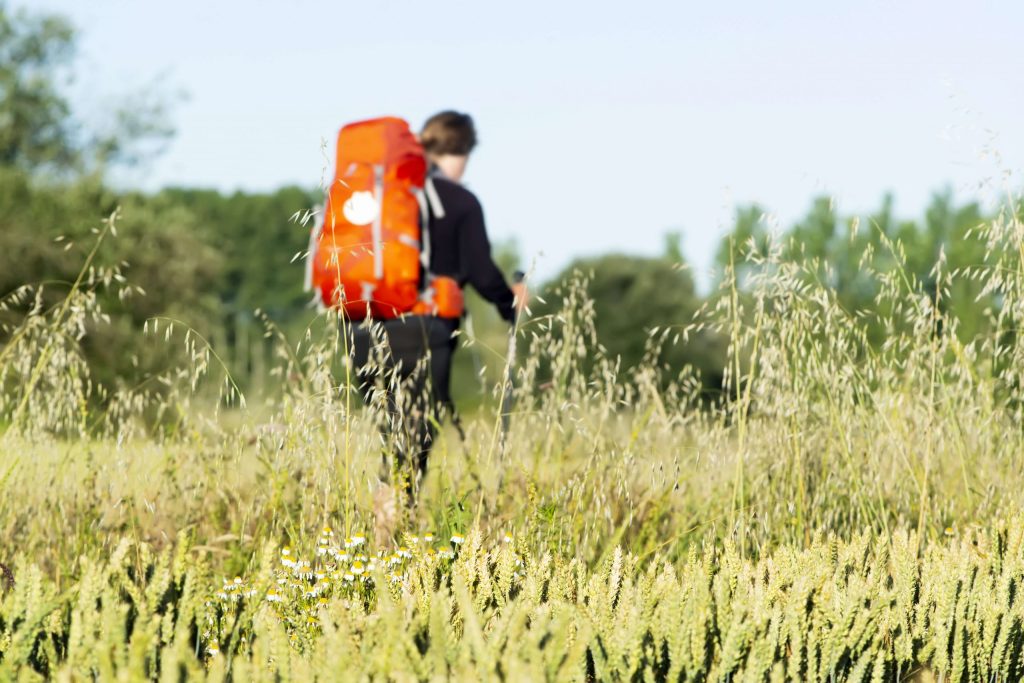To walk the Portuguese Way to Santiago requires physical preparation. After all, it’s 260 kilometers between Porto’s Cathedral and Praça do Obradoiro in the capital of Galicia. But it’s not as difficult as it seems. All it takes is a few months of training before the big walk and you are ready to follow the crossing. However, the route is made of long stages, different terrains and inclines and descents. In this article we’ll show you the best ways to prepare the Way Camino and the care you should take to avoid injuries and the dreaded foot blisters.
How to prepare for the long stages of the Way to Santiago
The physical preparation for the Way to Santiago is very important because there are at least two stages that are longer than 30 kilometers (up to Ponte de Lima and Pontevedra). That is, about 10 hours of walking or 39370 steps. So you need to have the physical and mental endurance to last until the end of the day without thinking of giving up. And you can’t forget: during the walk you will be carrying a backpack on your back. How do you train endurance?
The smart thing is to start slowly. The decisions to walk the Way to Santiago can be sudden, but it is important to give your body at least a month of training to get used to doing long walks. We imagine that you may be working and don’t have time to do a 20-kilometer daily walk. So try to dose your workouts in different phases.
Stage 1) 5 kilometers without a backpack on your back.
You have to warm up your body until it gets used to the idea that it has to move more often. Let’s start slowly, 5 kilometers per training session. Still without a backpack on your back. As soon as you feel you can do more, increase the distance. One week should be enough for this introduction to exercise.
2nd stage) 10 kilometers with a backpack.
Go for a 5 to 10 kilometer hike, but now with the weight you should carry in your backpack – there’s an article on that subject, if you want to read it. This way your body gets used to carrying those extra pounds. However, don’t go every day. In exercise, as in everything in life, you need rest to get better. Excess is the enemy of perfection and you can get injured. Two to three weeks tends to be enough at this point.
3rd stage) 15 kilometers with backpack and on various terrains.
You’re almost ready to make the Camino. At the last moment of training you start to push your legs. Try 15 kilometers, if possible. Or, if you’re brave enough, 20 with your backpack on! Nevertheless, whenever you feel you are overdoing it, stop! Don’t strain your body too much. It is also a good idea to change terrains. The best thing is to simulate what you’d find along the way to the Galician capital so you won’t be taken by surprise by the difficulty of the descents to Pontevedra or the climb up the mountains of Labruja.

Physical preparation for the Way to Santiago in different terrains
During the Portuguese Way to Santiago you will find roads with asphalt, dirt, hills and valleys and, depending on the time of year, some mud. Therefore, it is important to understand how your body adapts to the different surfaces and the precautions to take in each of them. Grab your sneakers or boots and follow these tips:
1) Tarred roads
If they are like this, it is most likely that cars may pass by. And in all places with cars, pilgrims need to double their attention. In these moments it is common sense to avoid earphones or other devices that can distract you. You have to see with your ears and hear with your eyes. You can’t pay too much attention. Also, you should always walk on the left side of the road so that you can see the approaching cars. The road, however, turns out to be simpler. Apart from a few moments with elevations that are more challenging for your leg muscles, there are not many other directions.
2) Rammed earth
The most important thing to keep in mind when traveling on this type of road is the possible lack of grip your shoes or boots may have. This way, you have to be careful with the small pebbles you find on the path and keep a strong and careful stride so you don’t slip at inopportune moments.
3) Hills with ups and downs.
Most of the routes on the Portuguese Way to Santiago traverse mountains and hills with high altitudes, such as the Labruja mountains.Therefore, the descents can also be long and sometimes even more difficult than the ascents. As with the dirt tracks, it is important to pay attention to where you place your feet while walking. A wrong step can be enough to risk serious injury. If you live in an area with hills or mountains, like Sintra, it is possible to practice in these places. There are many groups of hikers to help.
Precautions to take when you physically prepare for the Way to Santiago
One of the most annoying situations on the Way to Santiago are blisters on the feet. These happen due to friction between the skin and the fabric of the shoes you have decided to wear. Often, when sneakers or boots are new, they have a tight fit. Commonly said: “they are not used to the foot”. This causes, as you can imagine, more contact between skin and fabric and leads to (more) blisters. The advice we can leave you with is the following. If there is the need to buy new shoes, at least train with them. You don’t want to get unnecessary blisters!

One more piece of advice for the journey ahead.
The Way to Santiago is not an easy pilgrimage. For those who are not used to exercise and walking, a rigorous physical preparation of utmost importance. To better prepare the Way to Santiago yourself and know what awaits you on the trail between Porto and Santiago de Compostela, take a look at the stages we have on the website. They will help you plan your workouts, as there are descriptions of the terrain, the times, and even the slopes at each stage.
Come and meet the starting point for a Good Way!
